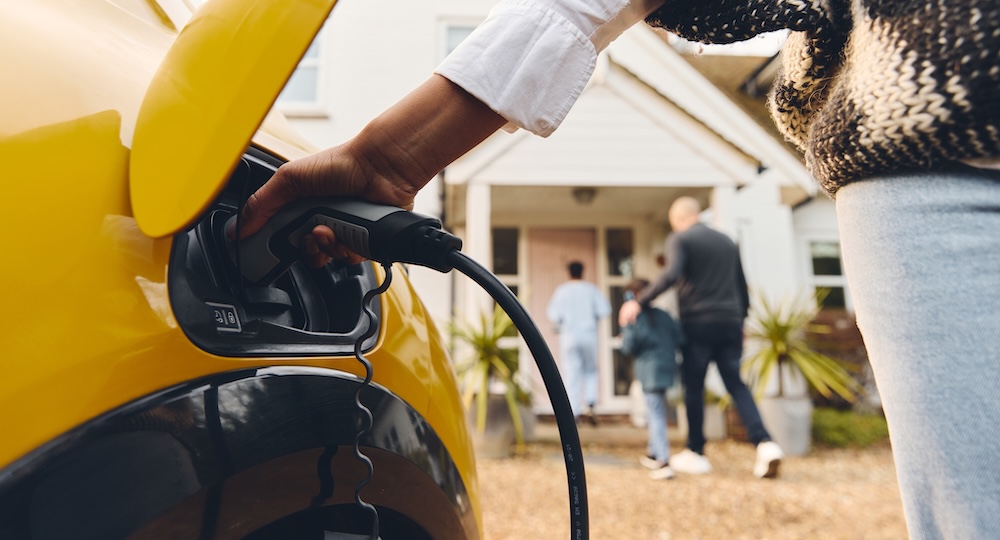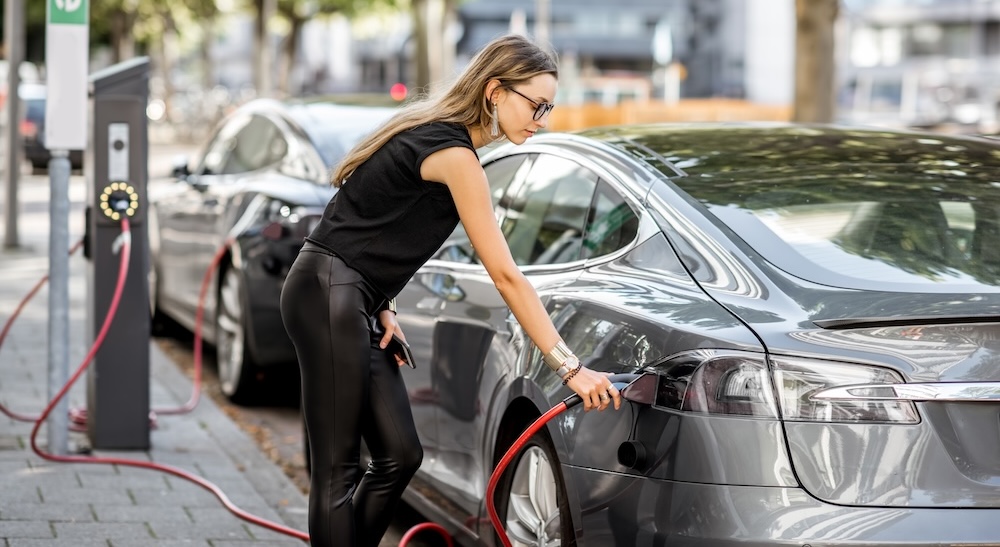EV car safety: Crash ratings, battery safety, and emergency features
EV car safety in the UK meets the same high standards as petrol and diesel vehicles. Thanks to rigorous Euro NCAP crash ratings, robust battery management systems and advanced safety features, EVs offer excellent driver protection and low fire risks.
Electric vehicles have come a long way in recent years, with adoption growing year-on-year. However, one topic that continues to be at the top of mind for consumers is EV car safety.
In the UK, EV safety standards are tightly regulated through Euro NCAP testing and government backed safety criteria, who’s extensive testing demonstrates that EVs are perfectly safe to drive.
Additional research suggests that EV are just as safe (if not more so), than vehicles with internal combustion engines (ICE), with data showing EV fires are 20 times less likely than ICE fires.
Yet despite the data, myths surrounding high-voltage safety are still prevalent. Our research shows that one in four (25%) UK drivers still mistrust EV battery safety, believing that they’re more likely to catch fire than petrol or diesel vehicles.
This guide aims to dispel many of these EV car safety myths through clear, evidence-based insights. We’ll explore fire risks, crash ratings, and the advanced vehicle safety features built into electric vehicles, helping you make an informed decision about choosing between an EV or ICE vehicle.
EV battery safety and fire risks
The majority of EVs are powered by rechargeable lithium-ion batteries, which are generally considered extremely safe. In very rare cases, usually caused by damage to the EV battery system can lead to ‘thermal runaway’. This effect causes overheating and rapid fire spread, which can be difficult to extinguish.
However, EV fires are extremely rare. In fact, it is much less common to see a fire in an EV vs ICE. For example, the London Fire Brigade’s emergency response team attended 54 EV fires in 2019, compared to 1,898 petrol and diesel fires in the same time period. This reduced fire risk is due to the lack of combustible fuels on board, as well as the multiple high-voltage safety systems that help prevent EV fires.
Thermal management
One of the most important elements of EV battery safety is their internal thermal management system, which helps to keep the battery cool and avoid overheating. Unlike ICE vehicles that use a simple air-cooling system, there are several mechanisms used in EV thermal management, including liquid coolant, cool air, and pumps that absorb excess heat and reduce fire risk.
How to help prevent EV fires
While high-voltage safety systems are designed to maintain battery health and reduce EV fire risk, users can also mitigate risk by following the manufacturer’s instructions for caring for their battery.
For example, you should:
- Regularly inspect cables for signs of wear.
- Avoid using damaged equipment.
- Only use charging stations compatible with your EV.
- Have your EV serviced regularly.
- Have your EV battery safety checked by a qualified technician after any accidents.
EV crash ratings and collision protection
The way that electric vehicles are designed, built and tested helps ensure robust EV safety standards in the event of a collision.
EV crash safety tests
As well as new electric models going through rigorous testing against EV safety standards before going to market, all new cars in the UK are tested by the European New Car Assessment Programme (Euro NCAP) to assess their safety.
The Euro NCAP assessment covers collision protection tests for adults and children inside the vehicle, as well as pedestrian protection and the presence of crash-avoidance features.
After being assessed, each vehicle is assigned a crash rating of up to five stars to indicate its overall safety. EVs regularly perform well in these assessments, and, in 2024, the overall ‘best performer’ across all vehicle types was an electric model.
Crumple zones
Crumple zones are collision protection features on vehicles that help absorb impact in the event of a crash and slowing down the vehicle.
Traditional combustion engines take up a large amount of space in petrol and diesel vehicles, leaving less room for manufacturers to incorporate crumple zones. However, because EVs don’t require this, engineers are able to incorporate larger crumple zones into their designs, providing additional EV car safety measures for passengers.
EV structural design
EVs are, on average, heavier than ICE vehicles due to the weight of their lithium-ion batteries. While this does mean they can require more frequent tyre and brake care, it can actually be an advantage for EV safety standards.
This is because the battery is placed low down in the centre of the vehicle, reducing the risk of the vehicle rolling by lowering the the centre of gravity. The battery’s position can also strengthen the sides of the vehicle, which helps provide collision protection for passengers from side-on impact.
Emergency features and safety technology in EVs
The advanced technology present in many EVs supports a range of sophisticated driver assistance safety features.
EV fire suppression systems
As well as the systems already discussed which are designed to prevent EV fires, most modern EVs also feature emergency response mechanisms that help prioritise safety and minimise damage if a fire does occur. These include battery enclosures manufactured using fire-retardant materials, as well as active safety systems which automatically disconnect the high-voltage battery in the event of a crash or fire.
Advanced driver assistance systems (ADAS)
Like ICE vehicles, many EVs feature active safety systems, or advanced driver assistance systems (ADAS) that help drivers mitigate risk on the road.
Common features include:
- Adaptive cruise control to maintain a safe distance from the vehicle in front.
- Lane keeping assistance to prevent drifting over road markings.
Automatic emergency braking (AEB) to stop or slow down the vehicle where necessary and reduce the risk of collision. - Blind spot monitoring that alerts the driver when there is a vehicle in their blind spot.
Many of these vehicle safety features are now standard across UK and European EV models, helping to support EV car safety by minimising the impact of potential driver errors.
Tips for choosing a safe EV
When it comes to EV car safety, every new model in the UK must meet strict safety standards and are therefore safe to drive. However, there are things you can look for when buying an EV (particularly on the used market) to help you choose the safest option.
Understand active safety systems
While the majority of EVs feature active safety systems such as AEB and lane-keeping assistance, always check the vehicle’s specifications before making a purchase to understand which features are available and how they can increase EV car safety.
Similarly, while a battery management system is a core safety feature of all EVs, manufacturers provide different methods of accessing EV battery safety data. For complete peace of mind, some makes and models are compatible with manufacturer-specific apps, which allow you to monitor your EV’s battery management system from your smart device.
Check crash ratings
You should be able to find the EV model you’re considering on the Euro NCAP website, allowing you to review its crash rating and understand the quality of the collision protection measures in place. A full report of the inspection is also available to download, providing an in-depth view of all safety features.
Request the vehicle’s service history
Before purchasing a used EV, ensure that it has a full-service history. This provides reassurance that the vehicle has been regularly maintained and has had necessary EV safety standard checks, decreasing the likelihood of future faults.
Verify EV battery safety certifications
Some used electric vehicles come with a battery safety certification to help verify that the battery meets EV safety standards and is at a lower risk of overheating or developing potentially dangerous faults that could cause EV fires. These are not mandatory and are an independent assessment, so be sure to confirm the source.
EV car safety: Conclusion
Understandably, EV car safety is of paramount importance to anyone considering buying an electric vehicle for the first time. Fortunately, UK EV safety standards and testing have helped ensure that electric vehicles consistent meet or exceed the benchmarks set for ICE vehicles.
While myths around EV battery safety and fire risks still prevail, the data shows that EV vs ICE fires are far less common due to the lack of combustible fuels and advanced high-voltage safety systems.
Crash ratings also reliably demonstrate that EVs offer strong collision protection, featuring active safety systems that reduce the likelihood of driver error, as well as structural elements like large crumple zones to absorb impact in the event of a collision.
Overall, you can feel assured that EVs are safe to own and operate. For more guides on EV car safety and battery safety, visit our EV Hub.
EV car safety FAQs
1) Are EVs as safe as petrol or diesel cars?
Yes. UK EV safety standards are aligned with Euro NCAP testing, meaning EVs meet – or sometimes exceed – the same crash and battery safety benchmarks as petrol and diesel vehicles.
2) How likely are EV fires compared to ICE fires?
EV fires are far less common than ICE. In 2019, the London Fire Brigade attended 54 EV fires, versus 1,898 ICE fires.
3) What protects EV batteries from overheating?
Battery management systems (BMS) and thermal management units monitor the temperature and voltage within EVs to manage battery safety and prevent overheating.
4) What are the key vehicle safety features in EVs?
Modern EVs include active safety systems like automatic emergency braking, lane-keeping assist and fire suppression to support overall EV car safety.






